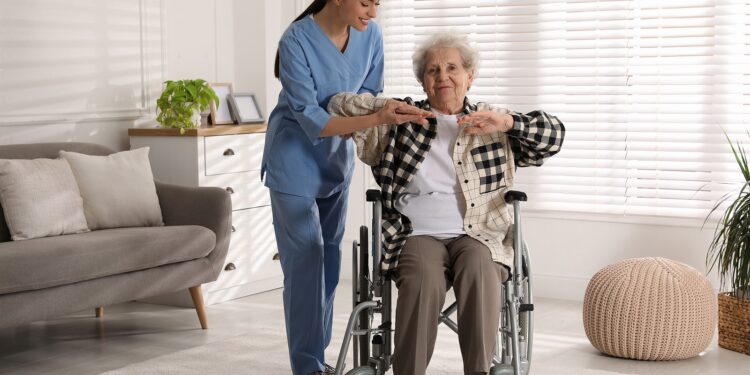As we grow older, our sense of independence becomes more precious — and, sometimes, more fragile. Everyday routines like making coffee, getting dressed, or moving from one room to another can start to feel more challenging than before. Yet maintaining independence is deeply tied to quality of life, confidence, and emotional well-being.
According to the World Health Organization, one in three adults over 65 experiences a fall each year, often leading to reduced confidence and decreased activity levels. But the good news is that staying mobile and independent at home doesn’t have to mean “doing it alone.” With the right environment, tools, and mindset, seniors can continue leading active, fulfilling lives — safely and comfortably.
Why Mobility Matters More Than Ever
Mobility is more than just movement — it’s freedom. It’s the ability to cook a favorite meal, answer the door, or water plants in the morning sun. When mobility declines, it doesn’t just affect physical ability — it can also impact mental health.
Studies from the National Institute on Aging show that limited mobility is closely linked to social isolation and depression in seniors. Losing the ability to move freely can lead to withdrawal, loss of confidence, and even faster physical decline.
That’s why supporting mobility is one of the most powerful ways to promote both physical and emotional well-being as we age. And much of that support begins right at home.
Common Mobility Challenges Seniors Face
Many older adults face similar barriers when it comes to maintaining independence.
1. Balance and Fall Risk
Aging naturally affects balance, muscle strength, and coordination. Slippery floors, poor lighting, and loose rugs can increase the risk of falls — one of the leading causes of injury in people over 65.
2. Fatigue and Reduced Stamina
Simple tasks like cooking or cleaning can become tiring, especially for those with arthritis, heart disease, or chronic pain. This can make it tempting to sit or lie down for long periods — which in turn can further reduce mobility.
3. Fear of Falling
Even after a minor fall, many seniors develop a strong fear of falling again. This fear can lead to self-limiting behavior: avoiding stairs, skipping errands, or hesitating to move freely — creating a vicious cycle of inactivity.
4. Inaccessible Home Layouts
Traditional homes are rarely designed for aging adults. Low chairs, narrow doorways, uneven flooring, or high shelves can make everyday activities unnecessarily difficult.
Creating a Safe and Supportive Home Environment
The key to maintaining independence isn’t just willpower — it’s smart adaptation. By making practical adjustments at home, seniors can move confidently and reduce the risk of injury or fatigue.
1. Rearrange for Safety and Accessibility
- Remove tripping hazards like loose rugs and clutter.
- Add grab bars in the bathroom and near stairs.
- Improve lighting in hallways and entryways.
- Keep frequently used items within easy reach — no stretching or bending required.
2. Use Assistive Furniture and Mobility Aids
Investing in ergonomic and assistive furniture can make a huge difference in daily comfort and independence. Height-adjustable chairs, supportive cushions, and mobility-friendly designs allow seniors to move and rest safely throughout the day.
A good example is the chairs for the elderly US made by VELA Chairs. Designed by occupational health experts, these chairs combine comfort, stability, and freedom of movement. With wheels for smooth mobility, locking brakes for safety, and adjustable height features, they allow seniors to move between rooms, work in the kitchen, or sit securely while performing daily activities — all while conserving energy and preventing falls.
Unlike typical household chairs, mobility-assistive designs like VELA’s promote active sitting and movement rather than confinement, helping seniors maintain their strength and independence.
3. Encourage Daily Movement and Gentle Exercise
Even light physical activity — such as walking around the house, stretching, or chair yoga — can significantly improve balance and joint flexibility. Experts at the Centers for Disease Control and Prevention (CDC) recommend at least 150 minutes of moderate activity per week for older adults, adjusted to individual ability levels.
Encourage routines that integrate motion naturally: standing during phone calls, gardening, or doing simple household chores can all count toward staying active.
4. Embrace Technology for Support
Smart home technology can play a valuable role in promoting independence.
- Voice assistants can help control lights, reminders, and calls without needing to get up.
- Fall-detection devices and smartwatches can automatically alert caregivers or family members in case of an emergency.
- Video doorbells and automated thermostats add comfort and safety with minimal effort.
Building Confidence Through Comfort and Control
Independence isn’t just physical — it’s also psychological. Many seniors hesitate to ask for help because they don’t want to feel like a burden. Providing tools that empower rather than infantilize can restore dignity and confidence.
Assistive furniture, for instance, allows older adults to perform familiar tasks on their own terms. Being able to sit comfortably while preparing meals, reaching bookshelves, or joining family conversations in the living room reinforces a sense of self-sufficiency.
This sense of agency often has ripple effects: increased confidence, improved mood, and a greater willingness to participate in social life.
Emotional Well-Being: The Hidden Benefit of Mobility
Maintaining independence is deeply emotional. Research from Age UK shows that seniors who stay mobile and socially engaged report significantly higher life satisfaction and lower rates of depression.
Mobility is also tied to identity. Being able to move freely — even within one’s own home — reminds seniors that they are capable, valued, and autonomous. When people feel secure in their environment, they are more likely to stay active, maintain friendships, and pursue meaningful activities.
Empowering Independence with Smart Adaptations
Aging doesn’t mean giving up freedom — it means reimagining it. By combining safety measures, movement, and supportive tools, seniors can preserve autonomy and dignity well into later life.
Small, thoughtful adjustments — like using assistive furniture, rearranging home layouts, and incorporating daily movement — can transform daily living from stressful to empowering.
For example, chairs that provide both comfort and mobility support allow seniors to move seamlessly through daily routines. Solutions like VELA Chairs demonstrate how ergonomically designed furniture can bridge the gap between independence and safety — helping older adults stay active and confident at home.
Aging Gracefully, Living Fully
Aging well isn’t about avoiding change — it’s about adapting with wisdom. Independence and safety can coexist beautifully when the right environment, mindset, and tools come together.
By prioritizing mobility, seniors can continue enjoying the activities they love, connecting with others, and maintaining control over their lives. Whether through gentle exercise, supportive layouts, or specialized chairs for elderly individuals, every small step toward comfort and safety is also a step toward joy.
So, take a moment to walk around your home, notice where small adjustments could make life easier, and explore solutions that foster independence. Brands like VELA Chairs show how thoughtful design can make a world of difference — turning everyday living into a celebration of freedom, comfort, and dignity.
If you or a loved one is looking to enhance mobility and independence at home, start by assessing your living environment and exploring assistive furniture options. From grab bars to ergonomic chairs for the elderly US, every adaptation adds up to a safer, more empowering lifestyle — helping seniors not just live longer, but live better.


 Home
Home









